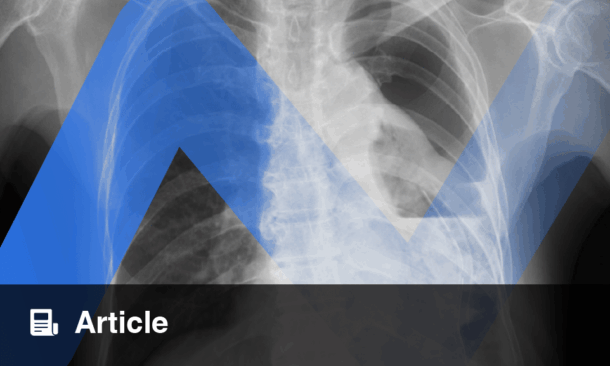Author: Pooja P. Advani,1 *Roberto A. Leon-Ferre2
1. Division of Hematology and Oncology, Mayo Clinic, Jacksonville, Florida, USA
2. Division of Medical Oncology, Mayo Clinic, Rochester, Minnesota, USA
*Correspondence to [email protected]
Disclosure: Leon-Ferre has reported providing consulting services for Gilead Sciences, AstraZeneca, Lyell Immunopharma, and Merck, outside the scope of this work, with fees paid to his institution (no personal payments); personal honoraria from MJH Life Sciences for CME events, and Connected Research and Consulting for consulting activities; and funding from the Mayo Clinic Breast Cancer SPORE grant (P50 CA116201) from NCI, the Mayo Clinic K2R Research Pipeline Award, the Eisenberg Foundation for Charities, and the Conquer Cancer – Breast Cancer Research Foundation Advanced Clinical Research Award for Breast Cancer supported by Breast Cancer Research Foundation. Advani has received institutional research funding from Gilead, Agendia, AstraZeneca-DSI, Caris Life Sciences, Seagen/Pfizer, Atossa Therapeutics, Modulation Therapeutics, Biovica International, Loxo Lilly, Sermonix, Menarini Stemline, Elephas, Puma, and 858 Therapeutics; served on advisory boards for Epic Sciences, Biovica International, AstraZeneca, DSI, Hesian Labs, Elephas, Belay Diagnostics, Merck, and Astrin Biosciences; and received consulting and speakers bureau honoraria from GE Healthcare, AstraZeneca, MJH Lifesciences, Menarini Stemline, Iksuda Therapeutics, Breathe Biomedical, Guardant Health, and DSI. Any opinions, findings, and conclusions expressed in this material are those of the author(s) and do not necessarily reflect those of the NCI, the American Society of Clinical Oncology (ASCO), Conquer Cancer, or Breast Cancer Research Foundation.
Keywords: Abemaciclib dose escalation, early breast cancer, HER2-positive breast cancer, immunotherapy combinations, metastatic breast cancer (mBC), neoadjuvant therapy, PIK3CA mutations, progression-free survival (PFS), sacituzumab govitecan (SG), trastuzumab deruxtecan (T-DXd).
Citation: Oncol AMJ. 2025;2[1]:27-34. https://doi.org/10.33590/oncolamj/DAHP8382
![]()
METASTATIC BREAST CANCER
First Results of ASCENT-04: First-Line Sacituzumab Govitecan + Pembrolizumab for PD-L1(+) Metastatic Triple-Negative Breast Cancer
Key takeaway: First-line sacituzumab govitecan + pembrolizumab significantly improved progression-free survival compared to chemotherapy + pembrolizumab in PD-L1(+) metastatic triple-negative breast cancer, and is expected to become the new standard of care.
A highly anticipated study was ASCENT-04, a randomized, Phase III trial evaluating sacituzumab govitecan (SG) + pembrolizumab (pembro) versus chemotherapy + pembro as first-line treatment for PD-L1(+) metastatic triple-negative breast cancer (mTNBC). SG is currently approved as second-line or beyond for mTNBC based on ASCENT, which showed significant improvements in progression-free survival (PFS) and overall survival (OS), compared to chemotherapy (OS improvement from 6.9 to 11.8 months). However, for PD-L1(+) mTNBC (40% of TNBC), the current standard first-line treatment is chemotherapy + pembro based on KEYNOTE-355, which demonstrated improvements in median PFS (5.6 months with chemotherapy alone versus 9.7 months with chemotherapy + pembro), and in median OS (from 16.1 to 23.0 months).
ASCENT-04 directly compared the KEYNOTE-355 strategy versus SG + pembro and demonstrated a significant improvement in PFS from 7.8 to 11.2 months (hazard ratio [HR]: 0.65; p<0.001). This highly statistically significant and clinically meaningful improvement is set to become a new standard of care for PD-L1(+) mTNBC.1 Additionally, ASCENT-03, evaluating first-line SG monotherapy versus chemotherapy in PD-L1(-) mTNBC, was recently announced to be positive. Pending presentation of the results, SG is set to potentially become the new standard first-line therapy for both PD-L1(+) and (-) mTNBC, effectively displacing chemotherapy and other antibody drug conjugates to the later line settings.
Despite these important results, key questions remain: (1) Will ASCENT-04 outcomes translate to real-world practice now that neoadjuvant pembro use is routine? In ASCENT-04, only 5% of patients had received prior immunotherapy, differing from current practice. (2) Is first-line SG + pembro superior to chemotherapy + pembro for de novo mTNBC? Subset analyses suggested similar outcomes with both strategies in the one-third of patients with de novo disease, contrasting with KEYNOTE-355 where de novo mTNBC derived greater benefit from the addition of pembro. (3) Will there be an OS benefit with first-line use versus later? SG clearly improved OS as second-line treatment or beyond in ASCENT. ASCENT-04 specifically built in crossover to SG at progression for those randomized to control, which may impact OS results. The investigators and the sponsor are to be congratulated for this decision, undoubtedly the most ethical approach for patients.
First Results of DESTINY-Breast09 (DB-09): First-Line Trastuzumab Deruxtecan + Pertuzumab for HER2(+) Metastatic Breast Cance
Key takeaway: First-line trastuzumab deruxtecan + pertuzumab significantly improved progression-free survival compared to taxane + trastuzumab + pertuzumab in HER2(+) metastatic breast cancer and is expected to become a new standard of care option.
Another highly anticipated study was DB-09, which evaluated trastuzumab deruxtecan (T-DXd) + pertuzumab (P) versus taxane + trastuzumab + pertuzumab (THP) as first-line treatment for HER2(+) metastatic breast cancer (mBC). THP has been the decade long standard, historically improving median PFS from 12.4 to 18.7 months and median OS from 40.8 to 56.5 months, compared to TH without P. DB-03 previously showed an improvement in median PFS with T-DXd in the second-line setting from 6.8 months (T-DM1) to 28.8 months (T-DXd). Now, in the first-line setting, DB-09 showed an improvement in median PFS from 26.9 months (THP) to an impressive 40.7 months with T-DXd + P (HR: 0.56; p<0.00001), an absolute improvement of 13.8 months.2
These remarkable results establish a new standard fist-line option for HER2(+) mBC. However, critical considerations remain: (1) The median PFS of 18.7 months previously reported with THP in CLEOPATRA was in the context of not allowing concurrent endocrine therapy (ET) for ER (+) mBC during the maintenance HP phase, likely underestimating real-world outcomes where concurrent ET use is common. The importance of concurrent ET was notably highlighted in PATINA, where the control arm using HP + ET demonstrated a median PFS of 29.1 months (over 10 months longer than seen in CLEOPATRA), and it was further improved to an unprecedented median PFS of 44.3 months (with the addition of palbociclib). The optimal sequence for ER (+) HER2(+) mBC remains unclear: should we treat à la PATINA first followed by T-DXd upon progression, or should we move T-DXd upfront for all? (2) CLEOPATRA used THP induction followed by taxane discontinuation and HP maintenance, while DB-09 continued T-DXd until toxicity or progression. Prolonged T-DXd treatment likely impacts quality of life more significantly than HP maintenance. DEMETHER is evaluating T-DXd induction x6 cycles followed by HP maintenance and may provide insights on this approach. (3) Is it necessary to add P to T-DXd? DB-09 included a T-DXd monotherapy arm, but results of this arm are not mature. (4) Will first-line T-DXd + P improve OS compared to later-line T-DXd? This will likely remain unknown since DB-09 did not allow crossover and T-DXd was not available to all patients in this global study.
Trastuzumab Deruxtecan Rechallenge After Asymptomatic Interstitial Lung Disease
Key takeaway: Trastuzumab deruxtecan rechallenge after asymptomatic interstitial lung disease appears safe with low recurrence rates.
Interstitial lung disease (ILD) occurs in 12–15% (with 1–2% fatal events) of patients receiving T-DXd and remains a major safety concern. Following Grade 1 (asymptomatic) ILD, guidelines recommend holding T-DXd, with the option to rechallenge upon resolution. Following Grade 2 or higher ILD, permanent discontinuation is recommended. However, in the pivotal trials, T-DXd rechallenge after Grade 1 ILD occurred in only 23%. In a retrospective multi-institution study, 44 out of 59 patients (75%) with Grade 1 ILD were rechallenged after a median of 42 days, and only 12 (27%) developed recurrent ILD, mostly Grade 1 again (9 out of 12), with no deaths. Patients remained on T-DXd for a median of 7.2 months post-rechallenge.3
SERENA-6: Switching Endocrine Therapy Based on ctDNA Detection of ESR1 Mutation before radiographic progression
Key takeaway: SERENA-6 confirmed that switching to camizestrant in response to emerging ESR1 mutations (molecular progression) during first-line therapy, prior to radiographic disease progression, offers a progression-free survival benefit compared to the standard approach of switching therapy at clinical/radiographic progression, but overall survival data are not mature.
SERENA-6 was a Phase III, double blind, placebo-controlled trial using ctDNA surveillance by serial liquid biopsy to detect emerging ESR1 mutation (ESR1m; indicative of aromatase inhibitor [AI] resistance) in patients with ER(+)/HER2(-) metastatic breast cancer (BC) on first-line AI + CDK4/6 inhibitor (at least 6 months of treatment). A total of 315 patients were randomized to switching to camizestrant (oral selective estrogen receptor degrader and complete estrogen receptor antagonist) or continue current standard treatment. A statistically significant reduction of 56% in the risk of progression or death (median PFS: 16.0 versus 9.2 months [camizestrant versus AI] was demonstrated. The study defined PFS-2 was also improved with camizestrant, with absolute benefit of 11 months (HR: 0.52; p=0.0038; did not reach predefined statistical significance). Compared to control, camizestrant was well tolerated with low treatment discontinuation rates (1.3% versus 1.9%) with a significant improvement in time to quality of life deterioration, from 6.4 to 23 months.4,5 The strengths of the study include the large Phase III blinded design (unlike PADA-1, which was open label, potentially introducing bias)6 to help answer a biologically relevant question, documented benefit of camizestrant in patients with ESR1m, and inclusion of all relevant mutations in the testing platform. Relevant secondary endpoints were included-PFS2, time to chemotherapy, quality of life outcomes, and OS. Important considerations include (1) lack of crossover to camizestrant and AI at the time of radiographic disease progression in the control group, preventing assessment of aggregate time of disease control; (2) OS data are not yet mature, which will be crucial for determining the ultimate clinical benefit; (3) only 315 patients randomized from 3,256 screened (9.7%), limiting generalizability and raising the question of ctDNA testing infrastructure and cost-effectiveness.
Therapeutic Targeting of Oncogenic PI3K/AKT Pathway
Key takeaway: Adding inavolisib to palbociclib and fulvestrant improved overall survival in patients with PIK3CA-mutated ER(+)/HER2(−) metastatic breast cancer in INAVO 120. Ipatasertib + fulvestrant significantly improved progression-free survival in ER(+)/HER2(−) metastatic breast cancer after CDK4/6 inhibitor + aromatase inhibitor.
Two studies reported on outcomes of patients using AKT targeted therapies.
INAVO 120 evaluated first-line fulvestrant, inavolisib, and palbociclib in PIK3CA-mutated endocrine resistant mBC (progression during/within 12 months of adjuvant ET completion). In the updated analysis presented at ASCO (median follow up is 34.2 months) PFS increased from 7.3 months with placebo to 17.2 months with inavolisib (HR: 0.42) and OS was improved from 27 to 34 months (HR: 0.67). Addition of inavolisib was associated with improvement in overall response rate and duration of response, which were translated into a longer time to chemotherapy of 35.6 months (inavolisib) versus 12.6 months (placebo, difference of approximately 2 years), a clinically relevant endpoint. Thirty percent and 12% of patients remain on treatment in the inavolisib and placebo group, respectively. Inavolisib was associated with higher PIK3CA-related toxicity, including hyperglycemia, with comparable rates of neutropenia versus placebo. Overall, lower discontinuation rate due to adverse events was seen with inavolisib (6.8%). It is important to note that <5% of patients received an adjuvant CDK 4/6 inhibitor. Additionally, in the control group <10% of patients received subsequent PIK3CA inhibitors, and this study used palbociclib with fulvestrant, which may not mirror real-world practice, as this tends to favor ribociclib and abemaciclib.7
FINER/CCTG MA.40 showed that in ER(+)/HER2(−) mBC post-CDK4/6 inhibitor and AI, adding ipatasertib to fulvestrant improved median PFS from 1.9 to 5.3 months in the intent-to-treat population (HR: 0.61), and from 1.9 to 5.5 months in the AKT-altered subgroup (HR: 0.47). PFS benefit was seen regardless of ESR1 mutation, with numerically greater benefit in ESR1 wild-type tumors. OS data are immature, and ipatasertib was well tolerated with mostly Grade 1–2 hyperglycemia and no Grade 3 events.8
VERITAC-2
Key takeaway: Vepdegestrant, an oral estrogen receptor degrader, demonstrated a significant improvement in progression-free survival compared to fulvestrant in ESR1-mutant ER(+)/HER2(-) metastatic breast cancer. However, its benefit in the overall population was not statistically significant.
The Phase III VERITAC‑2 trial evaluated vepdegestrant, a novel oral PROTAC (Proteolysis Targeting Chimera) ER degrader versus intramuscular fulvestrant in 624 patients with ER(+)/HER2(‑) mBC who had progressed after CDK4/6 inhibitor and ET. Randomization (1:1) was stratified by ESR1 mutation status and presence of visceral disease. Among 270 patients harboring ESR1 mutations, median PFS was significantly improved with once daily oral vepdegestrant (5.0 versus 2.1 months; HR: 0.58; P<0.001). In the intent‑to‑treat population, vepdegestrant showed a non‑significant trend toward improved PFS (3.8 versus 3.6 months; HR 0.83; P=0.07). Grade ≥3 adverse events were slightly more frequent with vepdegestrant (23.4% versus 17.6%), and discontinuations due to toxicity occurred in 2.9% versus 0.7%, respectively. While vepdegestrant offered significant benefit in ESR1‑mutant cases, overall efficacy in the broader population did not meet statistical significance. Long term follow-up of efficacy (OS) and safety data are needed. A major unanswered question includes the lack of a statistically significant benefit in the overall population, potentially suggesting other signaling pathways implicated in patients without ESR1 mutation (possible role of combination strategies) and its place in the current post CDK 4/6 inhibitor paradigm.9
EARLY BREAST CANCER
Tailoring treatment for early HER2(+) breast cancer: neoCARHP, Compass-HER2 pCR, and WSG pooled analysis
Key takeaways: (1) Neoadjuvant taxane + trastuzumab + pertuzumab without carboplatin is associated with high pathological complete response rates, particularly in ER (-) HER2(+) breast cancer, and is an option for many patients with Stage I-II tumors. (2) While six cycles remain the standard neoadjuvant therapy duration, four cycles are also associated with high pathological complete response rates.
Three studies reported outcomes following systemic therapy de-intensification for early HER2(+) BC. Following the routine use of dual neoadjuvant HER2 targeted therapy, questions have been raised regarding the individual contribution of the cytotoxic partners. While anthracyclines and taxanes with HER2-targeted therapies were standard, studies demonstrated the anthracycline could be safely omitted. Thus, docetaxel, carboplatin, trastuzumab, and pertuzumab (TCbHP) x6 cycles became the standard neoadjuvant regimen for Stage II-III HER2(+) BC, leading to pathological complete response (pCR) rates ranging between 41–68%. Following the abandonment of anthracyclines, carboplatin became the next omission candidate, having failed to show a benefit in the metastatic setting compared with taxanes plus trastuzumab alone. Small studies evaluating taxanes + HP (THP, without carboplatin) have shown encouraging pCR rates ranging between 39–91% (highest in ER [-] HER2[+] BC).
In neoCARHP, 774 patients with Stage II-III HER2(+) BC were randomized to 6 cycles of either THP or TCbHP. Over 70% had Stage II and over 60% had ER(+) tumors. Overall, pCR rates were similar (THP: 64%; TCbHP: 66%), highest in ER(-) tumors (78% in both arms) compared to ER(+) (THP: 56%, TCbHP: 59%). THP had more favorable safety, as expected.10 These results support the omission of carboplatin for most Stage II HER2(+) BC, acknowledging that long-term outcomes data are awaited. Additional data are needed for Stage III patients (who were a minority of the population in neoCARHP).
Another key question has been whether four versus six cycles of neoadjuvant therapy may suffice. Studies evaluating shorter THP duration have shown favorable pCR rates and long-term outcomes. CompassHER2 pCR (over 2,000 patients, most Stage II) demonstrated an overall pCR rate of 44% with four cycles of THP: 64% in ER (-) and 33% in ER (+) tumors.11 A pooled analysis of the WSG studies (approximately 700 patients, mostly Stage I), also supports the efficacy of THP x4, and additionally suggested that a subset of patients achieving pCR with an antibody-drug conjugate (T-DM1) alone also exhibit favorable long-term outcomes.12 Biomarkers like HER2DX pCR score showed promise in identifying patients likely to achieve pCR, though prospective validation is still needed.
ABCSG45: Neoadjuvant Olaparib + Carboplatin for Triple-Negative Breast Cancer with Homologous Recombination Deficiency
Key takeaway: Neoadjuvant PARP inhibitors + carboplatin led to high pathological complete response rates in early triple-negative breast cancer with tumor BRCA1/2 mutations but not in those with homologous recombination deficiency without BRCA1/2 mutations.
PARP inhibitors (PARPi) are a standard treatment for pathogenic germline BRCA1/2 mutation carriers with mBC or with high-risk early BC (as adjuvant treatment). In mBC, PARPi and platinums are active in other homologous recombination deficiency (HRD) mutation carriers, such as PALB2 mutations. PARPi has been evaluated as neoadjuvant treatment, as a potential strategy to decrease the need for chemotherapy. Several small studies have shown pCR rates of approximately 50% with single-agent neoadjuvant PARPi. ABCSG randomized 90 patients with early HRD(+) TNBC to six cycles of either carboplatin/olaparib versus docetaxel + epirubicin + cyclophosphamide (TAC), followed by surgery. Approximately 35% had a germline BRCA1/2 mutation and most (60%) had node-negative TNBC. Overall, the rate of Residual Cancer Burden Category 0/I (RCB 0/I) with TAC was 71% (pCR 57%; RCB I 14%), compared to 52% with carboplatin/olaparib (pCR 48%; RCB I: 4%). However, among those with tumor BRCA1/2 mutations, RCB 0/I was 77% with carboplatin/olaparib, compared to 65% with TAC, while in those without tumor BRCA1/2 mutations, RCB 0/I was 29% with carboplatin/olaparib, compared to 75% with TAC. This suggests that patients with BRCA1/2 mutations have a high likelihood of pCR with carboplatin/olaparib and may safely omit anthracyclines, but standard chemotherapy remains superior in those with HRD but without BRCA 1/2 mutations. As expected, carboplatin/olaparib led to more hematologic toxicities, while TAC led to higher rates of non-hematologic toxicities.13 Ongoing studies are evaluating neoadjuvant PARPi + immunotherapy in patients with BRCA1/2 or PALB2 mutations.
TRADE: Abemaciclib Dose Escalation in Early Breast Cancer
Key takeaway: Initial dose escalation strategy for adjuvant abemaciclib may enhance dose exposure and adherence in early breast cancer.
Rather than starting at full dose as in MonarchE, TRADE evaluated a strategy of starting adjuvant abemaciclib at a low dose of 50 mg twice-daily (BID) for 2 weeks, followed by 100 mg BID for 2 weeks, and followed by 150 mg BID. This resulted in 71% of patients reaching the target dose and 93% of patients remaining on treatment by 12 weeks, which compared favorably to what was seen in MonarchE.14 While this resulted in higher treatment adherence, it remains unclear whether a dose of 150 mg BID is needed in the adjuvant setting, considering that subset analyses in the metastatic setting have suggested no loss of efficacy with dose reductions.







